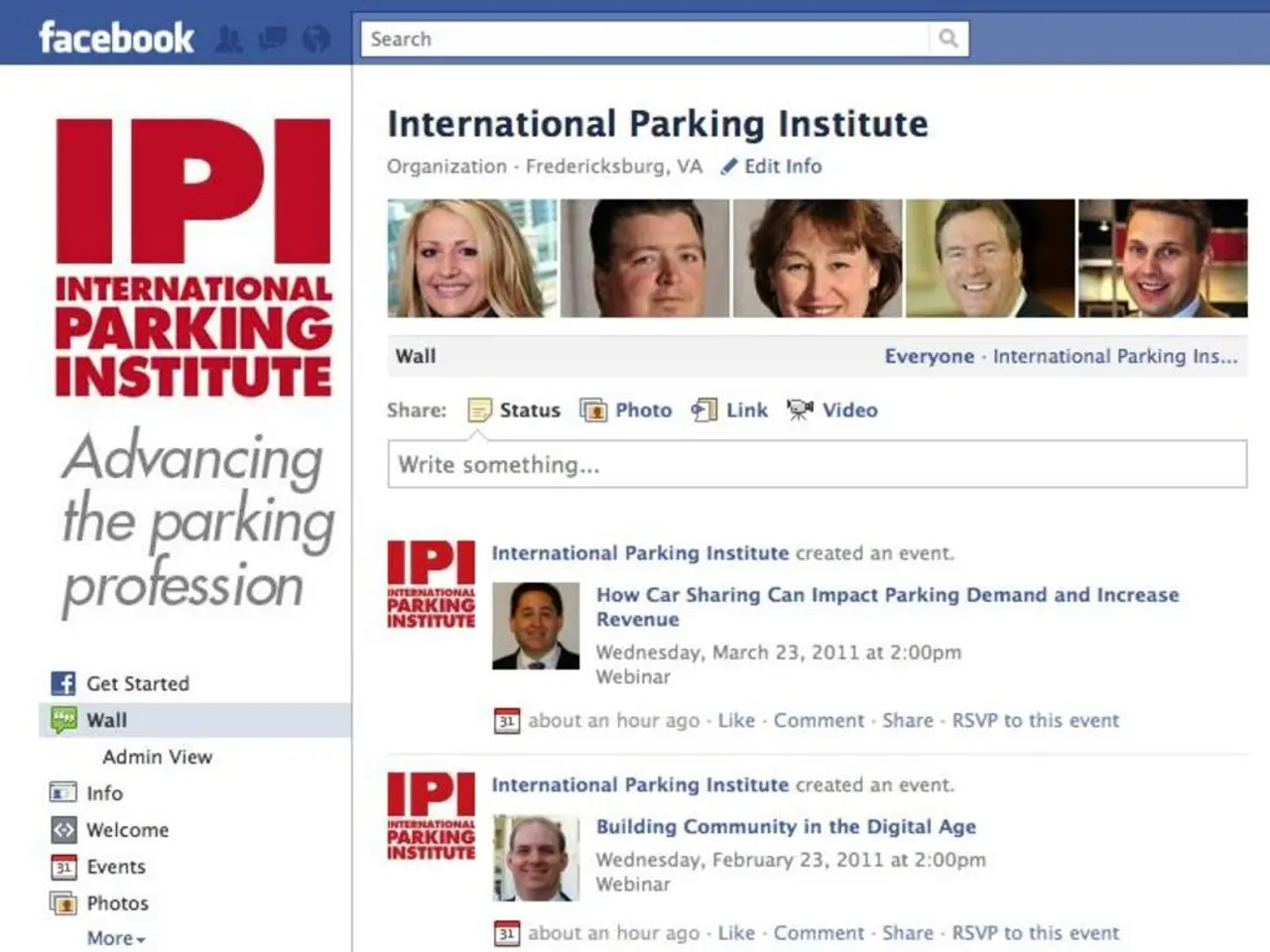Devising a Questionnaire for Employee Advantages and Perks
In the modern workplace, understanding the needs and preferences of employees is crucial for attracting and retaining top talent. One effective way to gather feedback is through an employee benefits survey. Here's a guide on how to design and implement an efficient survey that can help measure satisfaction accurately and drive meaningful improvements in your benefits offerings.
Defining Clear Objectives
The first step in creating an effective survey is to define clear objectives. These objectives should specify what you want to learn, such as satisfaction with benefits, communication, or how benefits meet employee needs. Clear goals help focus questionnaire design and analysis.
Designing Concise, Accessible Surveys
Design surveys that are concise, accessible, and easy to complete. Aim for surveys that can be finished within 10-15 minutes to maximize completion rates. Keep language simple and avoid jargon to ensure clarity.
Utilizing a Mix of Question Types
Use a mix of question types, including scaled (Likert) questions for quantitative measurement, multiple choice for specific feedback, and open-ended questions to capture qualitative insights and explanations.
Ensuring Anonymity and Confidentiality
Build trust and encourage honest feedback by ensuring anonymity and confidentiality. Emphasize this in communications about the survey.
Pilot Testing the Survey
Pilot test the survey on a small group to identify unclear questions or technical issues, allowing you to refine the survey before full deployment.
Making the Survey Accessible
Make the survey accessible on multiple devices, including mobile phones, to reach all employees regardless of location or role.
Communicating Clearly and Transparently
Communicate clearly and transparently about the survey’s purpose, timeline, and how the input will be used. This includes reminding employees to participate and explaining the importance of their feedback.
Distributing the Survey Using Multiple Channels
Distribute the survey using multiple channels, such as email, employee apps, or intranet platforms, to ensure wide reach and ease of access.
Analyzing Results Thoroughly
Analyze results thoroughly, looking for trends and areas needing improvement. Combine quantitative data with qualitative feedback for context.
Sharing Survey Findings Openly
Share survey findings openly with employees and outline specific action plans based on their feedback. This feedback loop builds trust and encourages engagement in future surveys.
Conducting Surveys Regularly
Conduct surveys regularly, at least annually or more frequently (biannual or quarterly), to track changes over time and measure the impact of improvements.
Complementing Surveys with Other Feedback Tools
Optional: complement surveys with other feedback tools such as interviews, peer reviews, and informal discussions to obtain deeper insights into employee satisfaction related to benefits.
By following these practices, you can create an effective employee benefits survey that not only measures satisfaction accurately but also drives meaningful improvements in your benefits offerings and overall workplace experience.
Remember, the survey can provide insights into the company culture and request feedback. For many workers, benefits are an important part of their overall compensation. A survey can ask for feedback about current benefits and any options a company may consider adding, with each benefit described briefly. In a rating scale question, respondents use a numerical scale from 1 to 10 to indicate the likelihood of using a benefit. Open-ended questions allow respondents to provide feedback in their own words, limited by a specific number of characters.
For sensitive questions, forced-choice questions tend to yield more accurate responses. Dichotomous questions elicit binary responses, such as "yes" or "no" or "agree" or "disagree." Use frequency questions to ask about the frequency of engagement with a benefit.
The platform for the survey should be built for today's business needs, with automated timekeeping and scheduling. The Pew Research Center offers pointers for question writing, such as making open-ended questions clear and avoiding overlapping response categories. Examples of survey questions include ranking and rating scale questions.
Lastly, a good employee benefits survey is well-organized and concise, with categories like Healthcare, Financial, Office Culture, Wellness, Paid Time Off, Work / Life Balance. Likert scale questions invite agree or disagree responses with a specific format. Identical question wording should be used when comparing results to those from earlier surveys.
Benefits also show that a company believes in its company, has strong enough finances to afford benefits, and wants to invest in its workforce. A survey by Willis Towers Watson found that 78 percent of employees said they are more likely to stay with their employer because of their benefits program. Incentives such as gift cards, catered office lunches, company swag, drawings, early respondent prizes, department competitions, paid time off, cash bonuses, and a mobile-friendly survey can encourage participation in an employee benefits survey. A focus group can provide feedback on the clarity of survey questions to ensure useful results.
In conclusion, an effective employee benefits survey can provide valuable insights into employee satisfaction, help identify areas for improvement, and drive meaningful changes in your benefits offerings. By following best practices, you can create a survey that is easy to complete, encourages participation, and yields accurate and actionable results.
- To measure satisfaction accurately and drive improvements, it's essential to establish clear objectives focused on understanding employee satisfaction with benefits, communication, and how benefits meet their needs.
- Design concise, accessible surveys that can be finished within 10-15 minutes to maximize completion rates, using simple language and avoiding jargon.
- Use various question types, such as scaled, multiple choice, and open-ended questions, to gather both quantitative and qualitative data.
- Ensure anonymity and confidentiality to build trust and encourage honest feedback. Emphasize this in survey communications.
- Test the survey on a small group to identify unclear questions or technical issues before full deployment, and make adjustments accordingly.
- Make the survey accessible across multiple devices to cater to diverse locations and roles within the organization.
- Communicate clearly about the survey's purpose, timeline, and usage of input, including reminders and explaining the value of employee feedback.
- Distribute the survey using multiple channels like email, employee apps, or intranet platforms to ensure wide reach and ease of access.
- Analyze the results thoroughly using both quantitative data and qualitative feedback, identifying trends and areas needing improvement.
- Share survey findings openly, outlining specific action plans based on collected feedback, and fostering a feedback loop that encourages engagement in future surveys.
- Conduct surveys regularly, at least once or twice a year, to track changes over time and measure the impact of improvements.
- Integrate other feedback tools, such as interviews, peer reviews, and informal discussions, for deeper insights into employee satisfaction related to benefits.
- A well-organized and concise survey should include categories like Healthcare, Financial, Office Culture, Wellness, Paid Time Off, Work / Life Balance.
- Use Likert scale questions for agreement or disagreement responses, and maintain consistent question wording when comparing results from earlier surveys.
- Benefits demonstrate a company's investment in its workforce, foundational strength, and commitment to its employees. Offering incentives such as gift cards, draw prizes, department competitions, or early respondent rewards can encourage participation in the employee benefits survey.
- The survey platform should be equipped with automation features for timekeeping and scheduling, and follow best practices for question writing, such as clarity and avoiding overlapping response options.
- In today's remote work scenario, conducting an effective employee benefits survey can provide valuable insights into employee satisfaction, helping companies make informed decisions about their benefits offerings and overall workplace experience.




